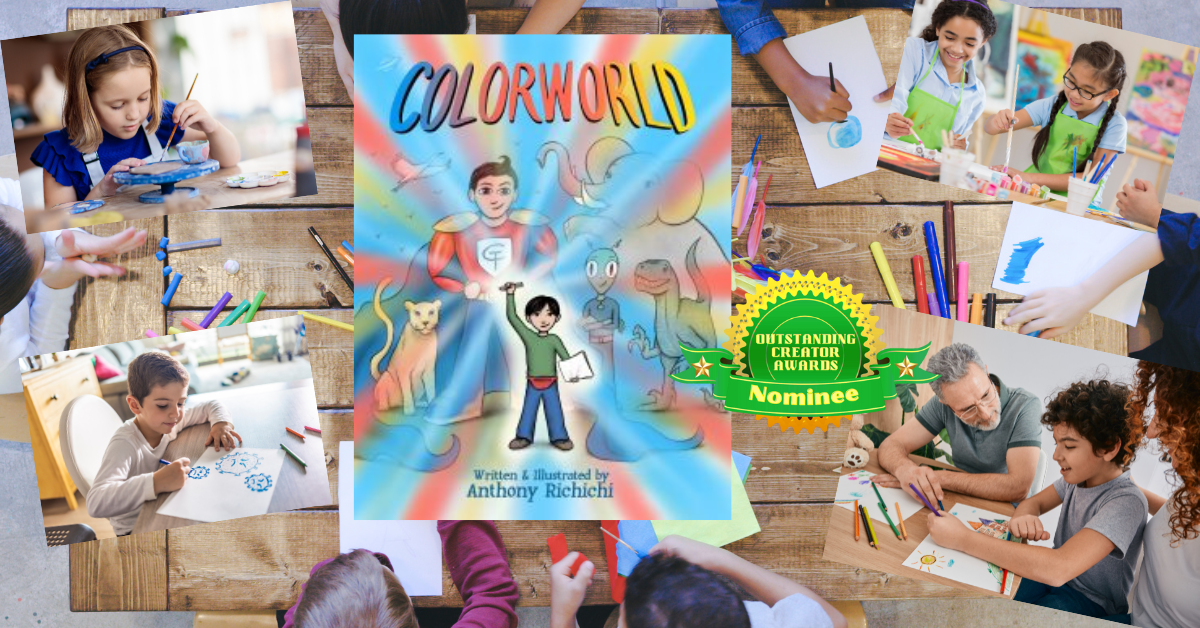|
94/100 (9.4 out of 10)
Imagination and creativity are some of the most important and powerful things that we possess as human beings. They're up there with health, happiness, and wealth. The reason for that is that imagination and creativity allow us to express ourselves and to manipulate/influence the world around us like a child influences a toy or solves a puzzle. This is how problems are solved. This is how cures are found. This is how airplanes and superheroes alike take flight. Anthony Richichi gets it. That's very apparent in his first-ever stand-alone literary effort, COLORWORLD. COLORWORLD follows an imaginative, creative, yet reclusive and socially-awkward little boy named Henry. Henry loves art, having many paintings and variations of famous paintings hanging on his wall, presumably for inspiration. His favorite hobby is sketching and doodling the adventures of the original character he created, a superhero named Captain Tony who seems to embody many of the things that Henry seems to lack: confidence, outgoingness, physical strength, and popularity. Henry and Captain Tony are actually terrific contrasts and foils for one another. However, they don't necessarily compete for a space or niche the way that many other character foils in other books do. Instead, they seem to complete each other. Captain Tony gives Henry an ideal: something he can aspire to be. At the same time, Henry provides the superpowerful Tony with an example of what it means to be vulnerable and human. Remember, as great and powerful as Tony is, he only exists because Henry's imagination is so great. You could argue that Henry's imagination is the only thing that gives Tony form and power. Without it, Tony is nothing. There are some very impressive and awesome stylistic choices that the author/artist made. First of all, there is a distinct difference in the use of colors in the first half and second half of this book. In the first half, the colors are very muted or near-absent. It kinda lowers your expectations, and it does so purposefully. Then, seemingly out of nowhere, the book explodes with color as Henry discovers how much he loves coloring his drawings with crayons and color pencils. It seems to unlock a whole new world of possibilities for him. Furthermore, the art quality becomes more sophisticated in the second half of the book, especially featuring animals (which seems to be something that Richichi is especially excellent at illustrating). Something else that we really appreciated about this book is that Richichi had Henry's doodles/sketches resemble those of actual children at his age. They don't look particularly finished or even “good,” missing fingers or being somewhat disproportionate, but it's not because the illustrator lacked the ability to produce good drawings (which is clear from the art on Henry's wall), it's because that's how children tend to draw. We shouldn't be down on kids or new artists when they're “making a mess” so to speak. Everyone makes a mess when they're starting up. It's honing that in and improving in your craft that we're ultimately after, along with self-expression. This book also explores the pressures that creative people go through such as being bullied, being belittled, being criticized, or feeling like you aren't making progress or that you aren't very good. We loved this book! Pre-order it today!
0 Comments
Leave a Reply. |
Archives
July 2024
Categories |

 RSS Feed
RSS Feed